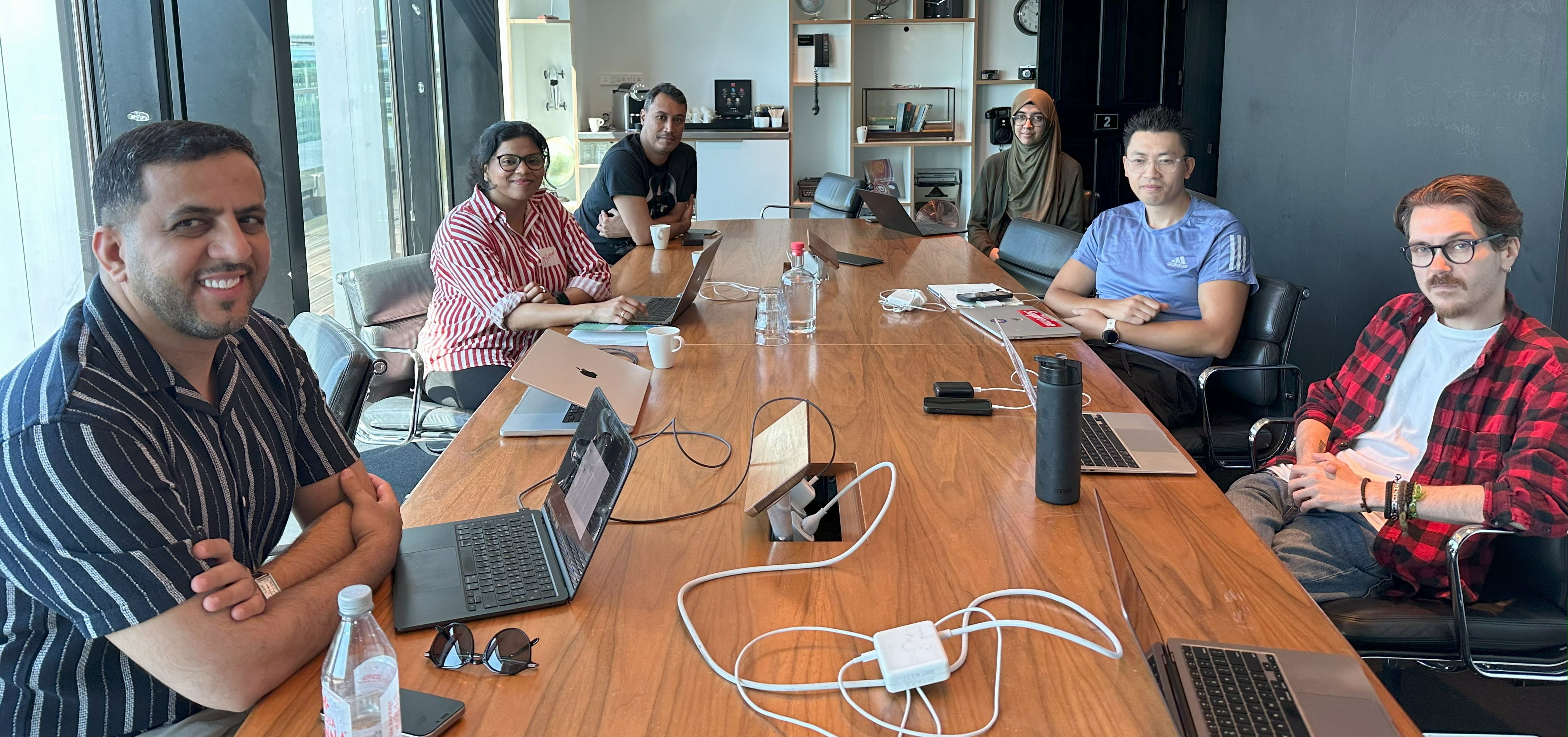Mastering Design Tokens: London Workshop Recap
07.16.2025-506abd.png)
Hello London
On July 11th, 2025, DOOR3’s Mastering Design Tokens Workshop landed in London’s lovely Tower Hill district, bringing together UX designers, developers, and digital product teams for a deep, practical dive into design system tokenization. The workshop was led by DOOR3’s own Jon Allen and Tom McClean, two seasoned experts in UX design.
Following the success of previous sessions in New York and Barcelona, the London workshop offered a refreshed and focused agenda. This time, we emphasized turning theory into action, helping teams not just understand design tokens, but implement them meaningfully within their own design-to-dev pipelines. To help attendees stay ahead of the curve, the course also included AI concepts and discussion of implementation and use cases for emerging smart tech.
Setting the Stage: Why Tokens Matter
Kicking off the day, Jon and Tom grounded the session in the broader purpose of design tokens. As base representations of design decisions, including colors, type sizes, spacing, and component properties, tokens serve as a bridge between UX and engineering. They ensure consistency at scale, eliminate redundant design debt, and support faster, cleaner handoffs.
But as Jon made clear early on:
“Tokens aren’t just a technical tool. They’re a process discipline that, without thoughtful structure, falls apart fast.”
The morning covered foundational topics like naming conventions, token structure hierarchies, and governance models. The group explored the difference between semantic and functional tokens, discussed real-world team adoption stories, and compared approaches across design tools and front-end stacks.
Practical Application: From Figma Variables to Dev-Ready Tokens
The live figma-to-code demonstration was supplemented with exercises built around Tokens Studio and Figma. Working from a curated workbook provided by DOOR3 available here, participants learned how to:
- Create reusable, platform-agnostic token sets within Figma
- Establish scalable naming conventions and token hierarchies
- Sync tokens with Tokens Studio to generate platform-specific code (JSON, SCSS, etc.)
- Automate updates from design to development using token pipelines
Attendees then teamed up to tackle real token implementation challenges, walking through decision trees that mirrored the kinds of questions they’d face in their own work.
As Tom shared,
"We're not saying this is the prescriptive solution for your team. We're showing you examples, recommendations and systematic ways of thinking that you can apply to your context."
Navigating Common Challenges
Throughout the technical deep dives, Jon and Tom spotlighted common tokenization roadblocks they’ve experienced, as well as how to solve them.
Fragmented Design Ownership
Without centralized token management, updates can become chaotic. The instructors shared strategies for establishing shared ownership between design and dev teams.
Uncontrolled Token Growth
As systems scale, the number of tokens can balloon. Jon emphasized the need for regular audits and clearly defined token categories to prevent sprawl.
Toolchain Misalignment
Even with the right tools, cross-functional teams can struggle to adopt consistent workflows. The workshop walked through versioning best practices and how to pair token updates with design documentation and release cycles.
Saad Almesalm, UX Director at Neoleap, came away with this insight:
“Designers need to think beyond the interface. The architecture behind the experience matters just as much.”
Read his full review on Linkedin.

Building Community Through Practice
Beyond the technical content, the London event served as a vibrant meet-up for UX practitioners who rarely get time to collaborate across organizations. The DOOR3 team facilitated group discussions, encouraging attendees to share insights and build peer support networks.
By the end of the day, attendees left with more than new skills; they’d also joined a burgeoning community of designers who understand the power of this new approach and its implications for UX practice in digital product development.
The London workshop marked another step in DOOR3’s mission to demystify complex UX tooling and foster a global conversation around design systems.
To that end, DOOR3 continues to offer a suite of tokenization resources through our dedicated design token hub where you can find our workshop workbook and our blog series on design token implementation and governance.
Final Thoughts: From Adoption to Acceleration
Design tokenization is no longer optional for teams working at scale. It’s a core capability for any organization aiming to unify design and development, improve product velocity, and reduce rework. Our workshops prepare designers for this emerging reality through structured guidance, hands-on experimentation, and shared challenges. Attendees can return to their work confident they can accelerate adoption, minimize friction, and help their teams implement design systems that work across tools, platforms, and releases.
Explore upcoming workshops, blog content, and resources at DOOR3.com
We’ll see you at the next session.



